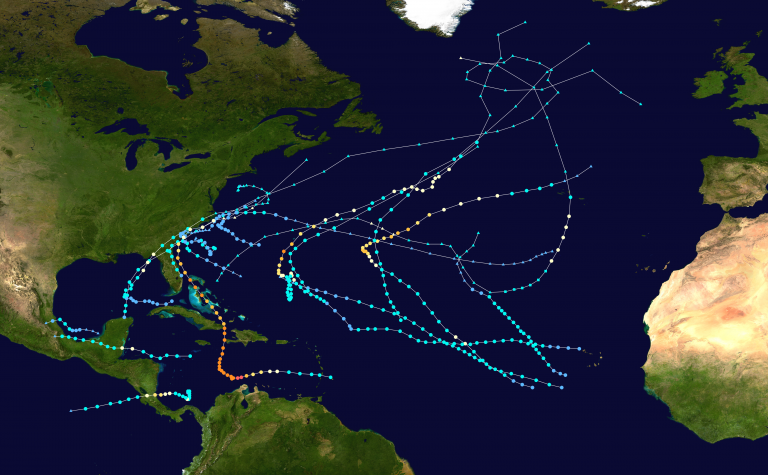First above-normal hurricane season since 2012 ends today

The most active Atlantic hurricane season since 2012 ends today, setting new records and marking the fourth season that New Jersey avoided a direct strike by a tropical cyclone.
Also the deadliest since 2005, the 2016 season featured above normal activity, including 15 named storms, seven hurricanes, and three major hurricanes.
The names used during the season include Alex, Bonnie, Colin, Danielle, Earl, Fiona, Gaston, Hermine, Ian, Julia, Karl, Lisa, Matthew, Nicole, and Otto.
An average season generates 12 named tropical systems, inclusive of six hurricanes and three major hurricanes.
A NOAA hurricane season forecast issued during the spring called for 10 to 16 named storms, four to eight hurricanes, and one to four major hurricanes.
In August, NOAA updated its outlook, expecting a 70 percent chance of 12-17 named storms, of which five to eight were expected to become hurricanes, including two to four major hurricanes.
Although officially beginning on June 1, the first named storm of 2016 came in mid-January when Hurricane Alex formed far offshore from the United States. It was the first Atlantic hurricane to form in January since Hurricane Alice in 1955.
New Jersey faced a significant threat on Labor Day weekend when Hurricane Hermine came dangerously close to striking to coast. But as the cyclone neared land, it moved further east than forecast model projections, sparring the Jersey Shore of major issues and instead delivering days of rough seas.
A month later, initial forecast model projections showed a potential threat from the powerful Hurricane Matthew, a Category 5 hurricane that killed over 1,600 people, mostly in Haiti, and was the deadliest since Hurricane Stan in 2005.
After striking Haiti, the cyclone made another landfall in Cuba, tracked through the Bahamas, brushed the Florida coast, and then moved north, making another landfall in South Carolina before pushing offshore.
The storm, generating torrential rain and extensive flooding in the southeast, was also responsible for the greatest loss of life in the United States since Hurricane Floyd in eastern North Carolina in 1999.
“The strength of Hurricane Matthew, as well as the increased number of U.S. landfalling storms this season, were linked to large areas of exceptionally weak vertical wind shear that resulted from a persistent ridge of high pressure in the middle and upper atmosphere over Caribbean Sea and the western Atlantic Ocean,” said Gerry Bell, Ph.D., lead seasonal hurricane forecaster at NOAA’s Climate Prediction Center.
And closing out the season, Hurricane Otto formed in the southwestern Caribbean Sea on November 21, eventually becoming the southernmost hurricane on record to strike Central America.
Otto, which was the first hurricane on record to directly strike Costa Rica, killed 22 people throughout Nicaragua, Costa Rica, and Panama.
WHYY is your source for fact-based, in-depth journalism and information. As a nonprofit organization, we rely on financial support from readers like you. Please give today.

